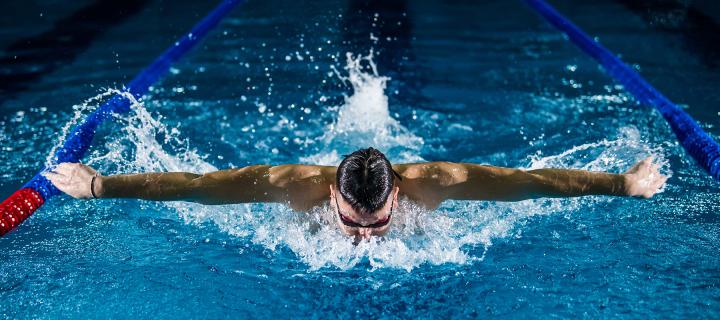Optimum swimwear compression for British athletes
EPSRC IAA-funded collaborative project conducted across the two universities, Edinburgh and Heriot-Watt, in collaboration with two industry partners.

Beginnings
A team of researchers from the School of Engineering at the University of Edinburgh and the School of Engineering and Physical Sciences at Heriot-Watt University led by Dr Philip Hands (UoE) and Professor Marc Desmulliez (HWU) had collaborated for a number of years on the fabrication of flexible, wireless pressure microsensors for intended application in medicine, sport and beyond. When the team reached the stage at which their fabrication process had been optimised and the sensors were ready for testing, they applied for EPSRC IAA funding so that they could engage the support and resources of an industrial partner.
A global company with an extensive portfolio of retail businesses in the sports, outdoor and sports fashion sectors became aware of the team’s work and saw it as an exciting opportunity to significantly enhance the performance of the sportswear manufactured by a range of its companies.
Anticipating high demand for their technology, the research team sought an additional partner that would be able to mass-produce their pressure sensors. They found a Scottish microelectronics manufacturer that was keen to offer its expertise and had been looking for opportunities to branch into the burgeoning market of flexible electronic technologies.
Breakthrough
While the exact measurement of compression exerted by elite sports garments is crucial for optimum performance, the existing pressure measurement unit was cumbersome and unreliable. Equally unreliable was the anecdotal feedback of athletes testing the sportswear, which the brand had been forced to rely on for lack of a qualitative method of performance indication. By contrast, the pressure microsensors designed by Dr Hands and Professor Desmulliez’s team are paper-thin and almost undetectable.
IAA funding made possible the design and build of a sensor demonstrator system that is now ready for testing by the brand with elite athletes. Successful testing and application of the microsensors will facilitate the future design of compression sportswear in response to highly specific and tailored data.
Plans for the future
While there is a great deal of activity in the area of flexible electronic technologies, attempts by other research teams to create flexible pressure sensors have failed to make the leap from lab project to viable product because their manufacturing methods were too complicated and/or expensive to allow for mass production. By contrast, the technology and fabrication process developed by this team can be cheaply and easily manufactured on a mass scale, giving them a significant technological and financial advantage.
The fabrication process for the pressure sensors is currently patent-pending. The patent not only covers fabrication of the pressure microsensors, but extends to other flexible electronic devices, and as such, it is poised to have a significant impact on the flexible microelectronics market. Once approved, the patent will also allow Dr Hands and Professor Desmulliez’s research team to come full circle and target their technology at the broad range of medical conditions that the microsensors were initially designed to alleviate.
EPSRC IAA funding
EPSRC IAA funding is for University of Edinburgh researchers and academics at all career stages to support activities that accelerate or amplify the impact arising from EPSRC-funded research. The funds are managed by Edinburgh Innovations on behalf of the College of Science & Engineering. Please contact the EPSRC IAA team EPSRCIAA@ei.ed.ac.uk with any questions.

